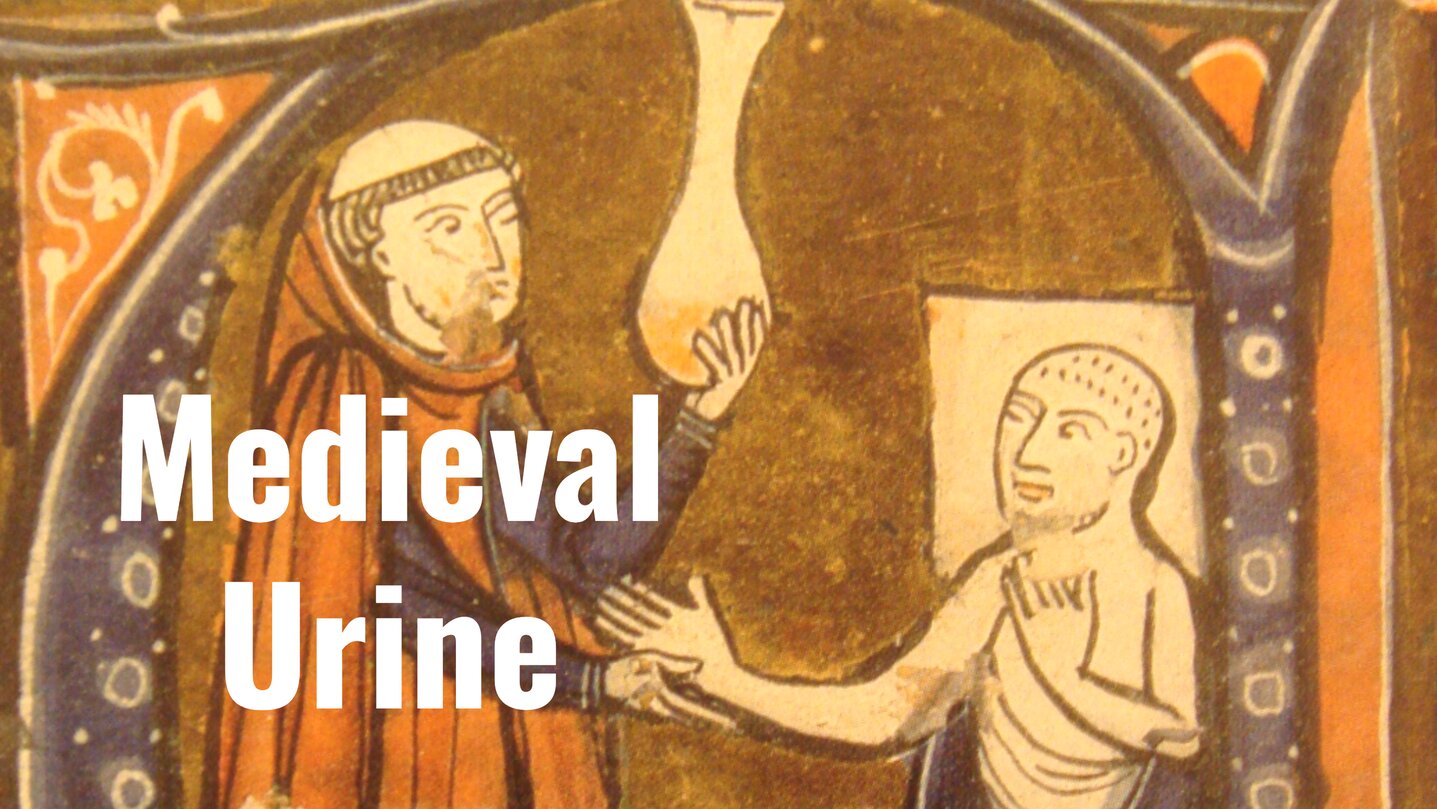If medieval physicians needed a guide for understanding what they were observing, they could turn to a uroscopy. One example of this is On Urines, written by Giles Corbeil around the start of the 13th century. Here are some excerpts from the text, which explain how to look at urine and what the prognosis is if someone’s urine is white or wine-coloured, or has a lot of bubbles.
What’s needed to be an expert judge of urine
The physician who wishes to be considered an expert judge of urine must consider with care the following things: what sort, what it is, what is in it, how much, how often, where, when, age, nature, sex, exercise, anger, diet, anxiety, hunger, movement, baths, ointment, drink. But the first four, which are particularly important, form the best basis of judgment. Health or illness, strength or debility, deficiency, excess, or balance, are determined with certainty by examination in this way.
If muddied with sediment
A large quantity of urine, darkened by a black cloudiness, and muddied with sediment, if produced on a critical day of an illness, and accompanied by poor hearing and insomnia, portends a flux of blood from the nose, depending on whether the other signs are ominous or favourable, the patient will die or recover.
If the urine is livid
If the urine is livid (dark bluish gray in color), the lividity is partial or total. If total, it means the mortification of a member or of its humours. Livid near the surface, it suggests various things: a mild form of hemitriteus fever; falling sickness; ascites; synochal fever; the rupture of a vein; catarrh, strangury; an ailment of the womb; a flux; a defect of the lungs; pain in the joints; consumptive phithisis; the extinction of natural heat. These are the causes of lividity – interpret them according to other symptoms.
White in colour
Thin urine, white in colour, is a sign of spleen, dropsy, intoxication, nephritis, delirium, diabetes, rheumatism, black bile, epilepsy, dizziness, chill of liver, or (with a bilious fever) death; in the old it is a sign of debility or childishness; in those suffering in the neck or shoulders, of lipothymia; in women, it is a sign of a number of complaints of the womb; and it also signifies hemorrhoids and condylomata.
Wine coloured
If the urine is wine-coloured, it means danger to health when it accompanies a continued fever; it is less to be feared if there is no fever. It can be produced when a caustic humor inflames the kidneys and liver; or when the renal vein ruptures; or when, its vessel broken, the menstrual blood passes from a woman’s body. Dancing, overmuch coitus, running and immoderate exercise produce the same signs in a healthy body. Blue-black urine follows this pattern too.
Rumblings of the guts
Swollen, airy, persistent bubbles rising to the top indicate crudeness of the humours causing the illness; also prolongation of the illness, with nephritis, headache, rugitum (rumbling of the guts), vomiting, and diarrhea.
The sure indication of good health
Colour, consistency, duration, form, and place are the determining characteristics of urinary sediment. The colour should be white, the consistency continuous, the form conical, the place at the bottom of the vessel, and the duration marked. If the sediment is all these – white, continuous, lasting, conical – digestion will be good, virtue strong, and natural action will flourish with a triple activity: it whitens, it cleanses, and it condenses, concentrates, and unites. This shows that the natural heat is dissipating ventosity and absorbing vapour; that the natural force is absorbing what is beneficial and resisting what it not; that nature’s actions are not interrupted or stopped. The sure indication of health derives from these signs.
When does your urine indicate death?
A very limited quantity of urine, passed with difficulty, livid and oily, foreshadows death.
Urine tinged green indicates jaundice, spasms, severe fever, and finally death.
This translation is part of the book Medieval Medicine: A Reader, edited by Faith Wallis and published by the University of Toronto Press in 2010.











